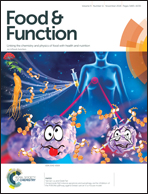
“Cannabis sativa var. spontanea is a spontaneous form of hemp with a low content of psychoactive cannabinoids and can be considered as a valuable source of other phytoconstituents to be used in nutraceuticals or for their health promoting properties.
Chemical data on this hemp variety are rather scarce. In this paper we report a comprehensive phytochemical characterization of leaves, male and female inflorescences of C. sativa var. spontanea growing wild in Hungary.
The results indicated that female inflorescence essential oil contains high amounts of the CB2 agonists (E)-caryophyllene (28.3%) and cannabidiol (CBD) (24.9%), whereas leaves and male inflorescence essential oils contained lower amounts of both compounds. HPLC-MS allowed to quantify CBD and CBD-A in the ethyl acetate extracts from leaves, male and female inflorescences; they were 0.3, 0.8 and 0.9%, and 0.2, 0.3 and 0.4%, respectively. Flavonoids were formed by C-glycosides and glucuronic acids of kaempferol and apigenin, with a total content of 3.8, 6.1 and 7.8 mg/g in methanolic extracts from leaves, male and female inflorescences, respectively.
Based on these results, C. sativa var. spontanea may represent an important source of CB2 agonists and bioflavonoids to be used in nutraceuticals, cosmetics and pharmaceuticals.”
https://www.ncbi.nlm.nih.gov/pubmed/30548994
https://onlinelibrary.wiley.com/doi/abs/10.1002/cbdv.201800562








